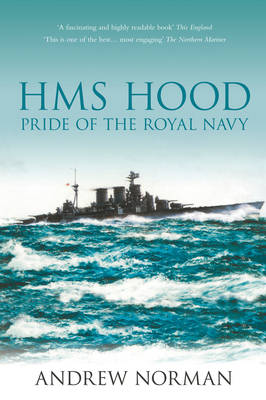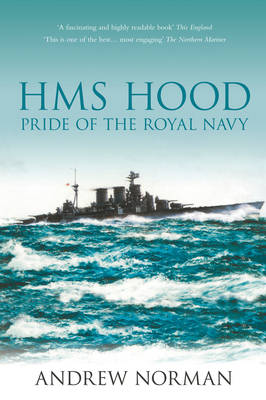
Je cadeautjes zeker op tijd in huis hebben voor de feestdagen? Kom langs in onze winkels en vind het perfecte geschenk!
- Afhalen na 1 uur in een winkel met voorraad
- Gratis thuislevering in België vanaf € 30
- Ruim aanbod met 7 miljoen producten
Je cadeautjes zeker op tijd in huis hebben voor de feestdagen? Kom langs in onze winkels en vind het perfecte geschenk!
- Afhalen na 1 uur in een winkel met voorraad
- Gratis thuislevering in België vanaf € 30
- Ruim aanbod met 7 miljoen producten
Zoeken
Omschrijving
When the battle cruiser HMS Hood was sunk by the Bismark and her consort Prinz Eugen in May 1941, the shock to the Royal Navy, Britain, and the world was immense. The Hood had seemed invincible and the epitome of naval power with her eight 15-inch and eight 4-inch guns. She would prove be anything but, and would become the tomb of 1,418 men. Basing his narrative on primary sources at the Royal Naval Museum and in Germany, plus a unique interview with one of only three survivors of the disaster, Andrew Norman offers his own theory for the ship's fantastically rapid loss. Doubts were immediately raised over the official verdict. Just how could an inboard fire break a ship this large in two? And why did she sink in just seven minutes? Andrew Norman suggests a new answer.
Specificaties
Betrokkenen
- Auteur(s):
- Uitgeverij:
Inhoud
- Aantal bladzijden:
- 160
- Taal:
- Engels
Eigenschappen
- Productcode (EAN):
- 9781862274532
- Verschijningsdatum:
- 1/01/2009
- Uitvoering:
- Paperback
- Formaat:
- Trade paperback (VS)
- Afmetingen:
- 155 mm x 229 mm
- Gewicht:
- 362 g

Alleen bij Standaard Boekhandel
+ 36 punten op je klantenkaart van Standaard Boekhandel
Beoordelingen
We publiceren alleen reviews die voldoen aan de voorwaarden voor reviews. Bekijk onze voorwaarden voor reviews.









